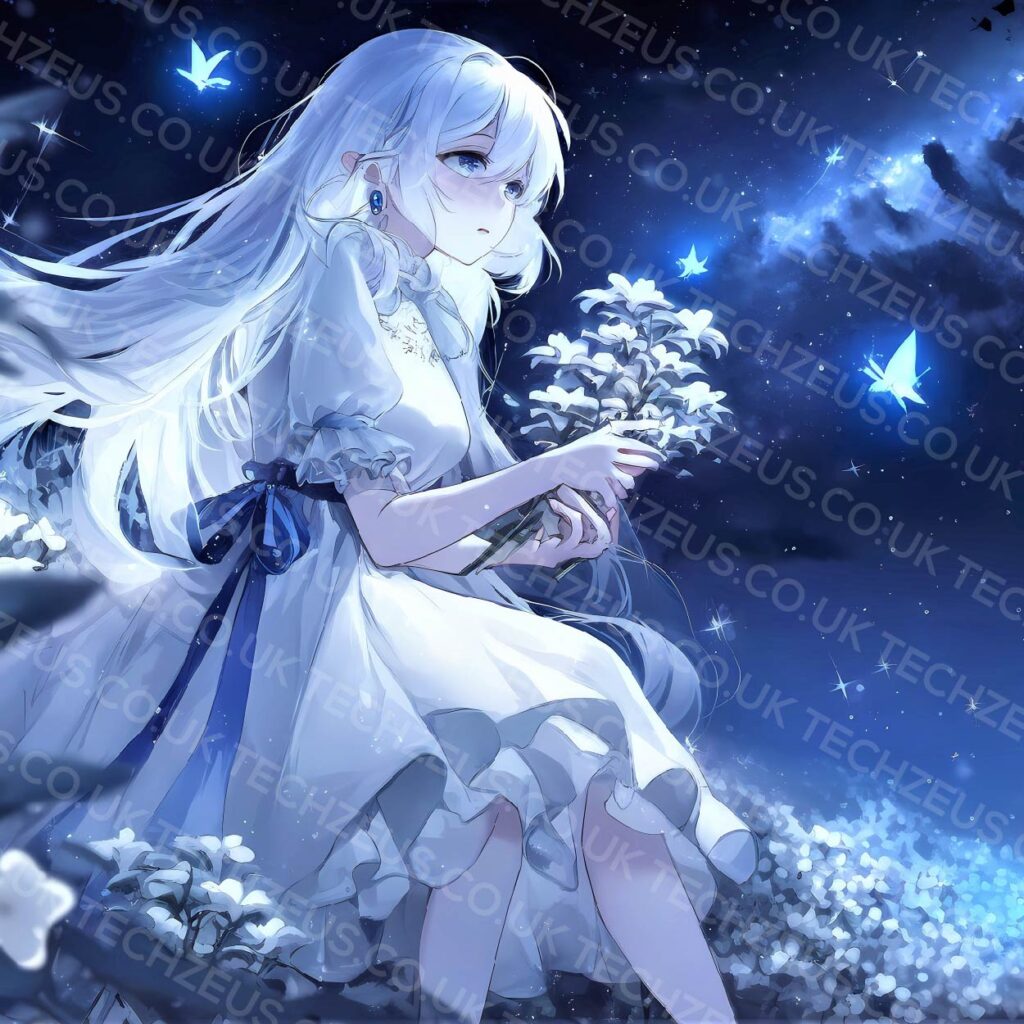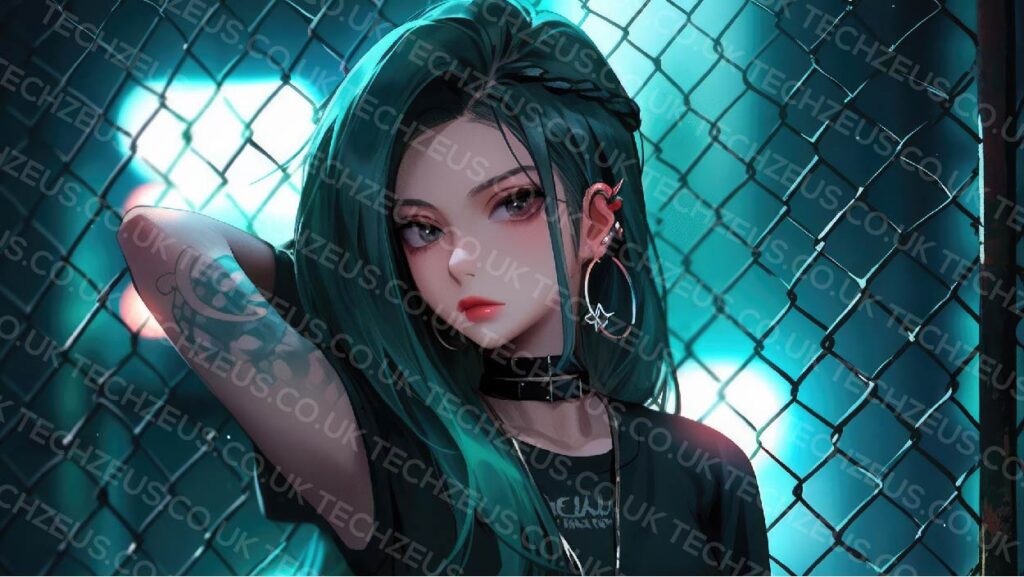(girl:erdvvtlkg44= anime) Anime is a medium that has captured the hearts and imaginations of audiences around the world. Central to many anime series are the female characters—diverse, complex, and often symbolic of various themes. These “anime girls” have not only shaped the narratives of their respective shows but have also influenced broader pop culture, fashion, and even social movements. This article explores the impact of anime girls, examining their roles in anime, the significance of their portrayal, and their influence beyond the screen.
1. The Rise of Anime: A Brief History
(girl:erdvvtlkg44= anime) Anime as a medium began in the early 20th century in Japan, with its origins tracing back to works like Astro Boy (1963). While anime grew in popularity through the 70s and 80s, it wasn’t until the 1990s and early 2000s that the medium began to reach a global audience. With shows like Sailor Moon, Neon Genesis Evangelion, and Pokémon, anime became a global cultural phenomenon.
Central to many of these early anime series were strong female characters who played significant roles, setting the stage for the complex portrayals of women in later works.
2. Defining “Anime Girls”
(girl:erdvvtlkg44= anime) The term “anime girls” generally refers to female characters in anime who are depicted in various roles, from action-oriented heroes to quirky, lovable sidekicks. While the term may vary in meaning based on context, it often evokes a specific aesthetic—large eyes, colorful hair, and exaggerated emotional expressions.
These characters can range from the shy and introverted to the assertive and powerful. Their personalities and traits reflect the diversity found in real-world people, often creating a strong emotional connection with the audience.
3. The Aesthetic Appeal: Visual Style and Design
(girl:erdvvtlkg44= anime) One of the defining features of anime girls is their visual style. Artists use exaggerated facial features, particularly large eyes and colorful hair, to convey emotions and to make characters more expressive. This distinctive look is not only a trademark of the medium but also serves to enhance storytelling by making the characters’ feelings easily recognizable.
Anime girls often have outfits designed to reflect their personalities or their roles in the story. From school uniforms to fantastical battle gear, their clothing choices add depth to their characters, helping viewers understand their function in the narrative at a glance.
4. Archetypes of Anime Girls: From “Shy” to “Strong”
(girl:erdvvtlkg44= anime) Within the broad spectrum of anime, there are several common archetypes for female characters. These archetypes help structure the storytelling and character development. Common archetypes include:
- The Tsundere: A character who appears cold or hostile but reveals a warmer, caring side as the story progresses.
- The Yandere: A character who is intensely in love with another, often to a dangerous degree.
- The Dandere: A shy, introverted girl who opens up to others over time.
- The Kuudere: A cool, aloof character who hides her emotions behind a calm demeanor.
- The Imouto: A younger sister figure who is often portrayed as cute and innocent.
These archetypes are often used to explore various aspects of personality and relationship dynamics, adding complexity to the anime’s narrative.
5. Anime Girls as Heroes: Power and Agency
(girl:erdvvtlkg44= anime) While traditionally, female characters in media were often relegated to supporting roles, anime has given rise to powerful female protagonists who take center stage. Characters like Sailor Moon (from Sailor Moon) and Naru Narusegawa (from Love Hina) were ahead of their time, breaking boundaries and proving that female characters could be both strong and multidimensional.
(girl:erdvvtlkg44= anime) Later works like Attack on Titan’s Mikasa Ackerman, Fullmetal Alchemist’s Riza Hawkeye, and Madoka Magica’s Madoka Kaname showcase a wide array of female characters who not only fight for survival but also struggle with complex moral decisions and internal conflict. These characters are empowered, capable, and often represent the fight against societal or existential pressures.

6. The Role of Feminism in Anime
(girl:erdvvtlkg44= anime) The portrayal of women in anime has evolved significantly over the years. In the 80s and 90s, many female characters were still relegated to supporting roles or depicted as one-dimensional stereotypes. However, as the medium grew and became more diverse, so too did the complexity of female characters.
Feminist themes have become more prominent, with many anime series focusing on the empowerment of women. Fruits Basket and Revolutionary Girl Utena are two examples where anime explores deeper feminist themes, such as independence, personal growth, and challenging societal expectations.
While not all anime features feminist themes, many series have started to feature complex, nuanced female protagonists who challenge traditional gender roles.
7. Anime Girls and the Male Gaze: Sexualization and Objectification
(girl:erdvvtlkg44= anime) Anime has long been critiqued for the sexualization of its female characters, with many shows featuring exaggerated physical attributes, revealing outfits, and suggestive themes. The so-called “male gaze” in anime, where the camera often focuses on female bodies in a way that objectifies them, has been a controversial subject for years.
(girl:erdvvtlkg44= anime) While this sexualization is often criticized, it also plays a role in the fantasy aspect of anime. Some argue that it is part of an escapist experience, while others believe it perpetuates harmful stereotypes and unrealistic expectations of women.
(girl:erdvvtlkg44= anime) Over time, however, many creators have sought to create more balanced representations of women in anime, blending sexuality with depth and agency, rather than simply objectification.
8. The Influence of “Moé” on Anime Girls
(girl:erdvvtlkg44= anime) The “moé” (pronounced “mo-eh”) phenomenon refers to the affection or adoration fans feel for cute, innocent, or pure-hearted characters, often with exaggerated features. Moé has become a major trend in anime, and many anime girls are designed to appeal to this aesthetic.
(girl:erdvvtlkg44= anime) Characters like Haruhi Suzumiya from The Melancholy of Haruhi Suzumiya and K-On!’s Yui Hirasawa exemplify the moé aesthetic—adorable, often naïve, but full of charm and personality. Moé characters have a broad fanbase and have even influenced real-world trends in fashion, art, and consumer products.
9. The Role of Anime Girls in Slice-of-Life Series
(girl:erdvvtlkg44= anime) In slice-of-life anime, where the focus is on the daily lives and interactions of characters, female protagonists are often depicted in very grounded and relatable ways. These anime explore themes of friendship, love, and personal growth, with female characters taking center stage in many iconic series.
Shows like Clannad and March Comes in Like a Lion explore the emotional lives of their female characters in a realistic and heartfelt manner. The focus here is on developing deep emotional connections between characters and capturing the complexities of real-life experiences.
10. The Cultural Impact of Anime Girls
Anime girls have transcended the screen to become symbols in various subcultures. They have been adopted by fans around the world, influencing everything from fashion to fan art to cosplay. Characters like Sailor Moon and Asuka Langley from Neon Genesis Evangelion are recognized globally, even by those who may not have watched the series.
Cosplay, in particular, has turned anime girls into icons of personal expression. Fans dress up as their favorite characters, attending conventions and events worldwide, demonstrating the cultural significance of these characters.
11. The Business of Anime Girls: Marketing and Merchandising
(girl:erdvvtlkg44= anime) The popularity of anime girls has led to an entire industry dedicated to their portrayal and commercialization. From action figures and posters to video games and clothing lines, the demand for merchandise featuring anime girls is a multi-billion dollar industry.
Characters like Miku Hatsune, a virtual idol from the Vocaloid series, have become global sensations, highlighting the economic power of anime characters. These characters often represent a blend of creativity, fandom, and entrepreneurship, with creators leveraging their popularity across various media platforms.
12. Anime Girls in Video Games and Spin-offs
(girl:erdvvtlkg44= anime) Anime girls have also found a place in the video game industry. Games based on anime series, such as Naruto Shippuden or Dragon Ball Z, feature beloved female characters as playable fighters or key plot drivers.
Additionally, original anime-inspired games often include female protagonists who can be customized and developed throughout the story. Persona 5 and Danganronpa are notable examples of games that focus on strong female characters in a narrative-driven context.
13. The Emotional Appeal of Anime Girls
One of the most compelling reasons anime girls resonate with audiences is their emotional complexity. These characters are not just pretty faces or simple stereotypes; they are often portrayed with significant emotional depth. Whether they are struggling with loss, grappling with self-identity, or working through complex relationships, anime girls offer a window into the human experience.
(girl:erdvvtlkg44= anime) Anime’s ability to capture the full spectrum of human emotion allows viewers to connect with these characters on a personal level, forging deep emotional bonds.
14. Representation of Diverse Female Characters
(girl:erdvvtlkg44= anime) In recent years, anime has become more inclusive in its representation of female characters. Shows like Carole & Tuesday and Beastars feature diverse female protagonists, exploring themes of race, culture, and sexuality. These series highlight the increasing recognition of diversity in anime, offering more nuanced portrayals of women from different backgrounds and walks of life.

15. The Relationship Between Anime Girls and Their Fans
The connection between anime girls and their fans can be intense and emotional. For many, these characters become role models, sources of inspiration, or even surrogate friends. This bond is fostered through the accessibility of anime and the way fans can relate to characters on a personal level.
Conventions, fan fiction, fan art, and online communities all provide spaces for fans to engage with the characters they love. This interaction creates a sense of belonging within the anime community and reinforces the emotional connections to the characters.
16. The Evolution of Anime Girl Tropes
The portrayal of female characters in anime has evolved considerably over the decades. Early anime often featured women in passive or subservient roles, but over time, female characters became more active participants in the plot.
Modern anime continues to experiment with the roles that female characters play, from protagonists to antagonists, mentors to sidekicks, and everything in between. This evolution reflects broader cultural shifts toward gender equality and the desire for more diverse storytelling.
17. Anime Girls and Identity: A Mirror for Young Audiences
For many young viewers, anime girls serve as a mirror for their own experiences and struggles. These characters often face challenges related to identity, relationships, and personal growth—issues that resonate strongly with a global audience, particularly teenagers and young adults.
By identifying with these characters, viewers can explore their own emotions and navigate complex issues through the lens of the anime world.
18. The Feminine Mystique in Anime
Many anime series play with the concept of the “feminine mystique”—the allure of the unknown, the depth of the female experience, and the fascination with women’s internal lives. Anime girls often embody these qualities, whether through their mysterious personalities, complex emotional struggles, or hidden talents.
This portrayal taps into the universal curiosity about the female experience, presenting characters that are both enigmatic and relatable.
19. The Future of Anime Girls
As anime continues to grow in global popularity, it’s likely that the portrayal of female characters will continue to evolve. We may see even more diverse and complex anime girls, breaking down stereotypes and offering fresh perspectives on women in both fantastical and realistic contexts.
The growing influence of female creators in anime also points to a future where women are not only portrayed as characters but also as creators and innovators shaping the medium itself.
20. Conclusion: The Enduring Appeal of Anime Girls
From their iconic designs to their emotional depth, anime girls have become a cornerstone of anime culture. They have inspired generations of fans, shaped the narratives of countless anime series, and impacted broader cultural and social movements. Their continued evolution reflects the growing demand for diverse, complex, and empowering portrayals of women in media.
As anime continues to captivate audiences worldwide, one thing remains clear: anime girls are here to stay. Whether they are breaking barriers, defying expectations, or simply being themselves, they will continue to shape the future of anime and beyond.







